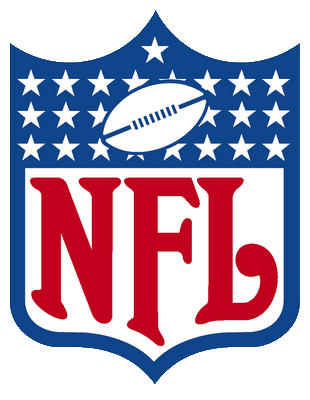NFL Defensive Statistics For 2023 - 2024
 There is no question that the NFL has changed into an offensive league, but knowing the NFL defensive statistics for the 2023-2024 season will help NFL betting fans gain more insight in beating scoring totals and spreads. Teams with solid defenses will oftentimes be able to keep a game close that they had no business being a part of in the first place. Defensive statistics are a facet of the game that requires only a tiny bit of research for the bettor but is worth so much more. The two most important categories arguably are the total defense and scoring defense.
There is no question that the NFL has changed into an offensive league, but knowing the NFL defensive statistics for the 2023-2024 season will help NFL betting fans gain more insight in beating scoring totals and spreads. Teams with solid defenses will oftentimes be able to keep a game close that they had no business being a part of in the first place. Defensive statistics are a facet of the game that requires only a tiny bit of research for the bettor but is worth so much more. The two most important categories arguably are the total defense and scoring defense.
Total defense describes the number of yards per game a team surrenders while the scoring defense describes how many points per game a team has given up on the year. Knowing this information can certainly help in the decision-making process of which side of a bet to go on. Different stats can certainly play into the hands of different bets more so than others, so be sure to figure out which strategy works best for your NFL betting habits.
Bet Based On Defensive Stats At These Sportsbooks
So, now that you know all of this information, where can you go to put it to some good use, other than your fantasy football league? Well, you can bet on the NFL, of course! There is definitely no shortage of NFL betting lines available at any online sportsbook where U.S. players are accepted and legally allowed to play. As big as the NFL is, bettors will find a ton of great game lines, plus a variety of prop odds to accompany them as well. Check out some of the top betting sites below, and pick one to lay down a wager.
Total Defense
Understanding total defense stats is pretty easy - it’s good to limit the yardage of your opponents, but not necessarily the be all end all. Obviously, if your opponent can’t gain any yards, you’re a great defense, but as always, context must be applied to statistics. Let’s take a look at the best teams in terms of yards per game allowed in the 2019 season.
| Team: | NFL Yards Allowed Per Game - 2019: |
|---|---|
| New England Patriots: | 275.9 |
| San Francisco 49ers: | 281.8 |
| Buffalo Bills | 298.3 |
| Baltimore Ravens: | 300.6 |
| Pittsburgh Steelers: | 304.1 |
The first thing that jumps out when looking at this list is how good the Patriots were, but that wasn’t necessarily consistent. The Patriots were one of the best defenses ever constructed through the first nine weeks of the season, and then started to fall off. If you only looked at the numbers, those early season weeks were keeping them afloat, and they still ended the year as the best defense in the league statistically, but several other defenses were better than them on a game to game basis down the stretch. This is one example of how simply looking at the defensive rankings can be a bit misleading.
Here’s another one - don’t read too much into the numerical ranking of a team’s defense. The Buffalo Bills were the third ranked defense in the league, while the Baltimore Ravens were fourth. Third is better than fourth, right? Yes, but only by about two yards per game - in other words, not an incredibly discernible difference. Make sure you don’t overfocus on the rankings when looking at team defense in the NFL.
Scoring Defense
Many teams adopt a bend-but-don’t-break mentality on defense, which leads to yards being given up, but points not being put on the board. This is a risky way to play, but the NFL lends itself to it just by virtue of how the game works. Think about it - when you’re on the 50-yard line, you have a lot of space to play with, offensively. You can run deep routes, you can try to get the ball to playmakers with room to run, that kind of thing. However, when you’re on the 10-yard line, space is suddenly limited - the defense has to cover a lot smaller of an area. This is what leads to a lot of bend-but-don’t-break defenses - they have elite goal line stopping capabilities. Let’s look at the top five in terms of points per game.
| Team: | NFL Points Allowed Per Game - 2019: |
|---|---|
| New England Patriots: | 14.1 |
| Buffalo Bills: | 16.2 |
| Baltimore Ravens: | 17.6 |
| Chicago Bears: | 18.8 |
| Minnesota Vikings: | 18.9 |
The clear outlier here, once again, is the New England Patriots, who held opponents to about two touchdowns worth of points a game. The same caveats apply here as well though - the Patriots fell off after midseason, but it didn’t matter to their statistics because they were so dominant through the first half of the season that when they went from all-time great to very good, their numbers didn’t really adjust, since they’re taken over the course of the whole season.
Once again, it’s important to take a look at the context of the teams involved, and, once again, it’s important to keep an eye on the rankings, but not to over-rely on them. Here’s a good example of why. Take a look at these three teams, and their points allowed per game.
| Team: | NFL Points Allowed Per Game - 2019: |
|---|---|
| New England Patriots: | 14.1 |
| Minnesota Vikings: | 18.9 |
| Denver Broncos: | 19.8 |
The Patriots, as discussed, were the best defensive team in the league. The Vikings were fifth, with 18.9 points allowed per game. The Broncos, you might think, were pretty close to the Vikings, right? They’re only 0.9 points per game behind them, after all. Well, no. The Broncos actually had the tenth best defense by this metric. As you get closer and closer to the average, more and more teams are going to be clumped close together. The gap between the first-place team and the fifth place team is well above the gap between the fifth place team and the tenth place team. Basically, there’s not a huge difference between fifth and tenth, looking at these numbers.
Defensive Efficiency
Finally, let’s talk about some advanced stats that you can use to take a look at NFL games in a way that isn’t just looking at counting stats without context. Before we do, here’s the usual disclaimer. Advanced statistics are just like normal statistics - you need context to apply them. That’s the big lesson of this entire page, honestly - don’t simply look at the numbers, ask yourself why the numbers are what they are, and what could change about the situation on the field to make them inaccurate. That said, sometimes the numbers are screaming at you, as in the case of the New England Patriots. We’re going to look at DVOA rankings for the top six teams (since Buffalo and Tampa were tied), courtesy of Football Outsiders.
| Team: | Defensive DVOA: |
|---|---|
| New England Patriots: | 25.5% |
| San Francisco 49ers: | 19.7% |
| Pittsburgh Steelers: | 18.4% |
| Baltimore Ravens: | 12.7% |
| Tampa Bay Bucs: | 11.5% |
| Buffalo Bills: | 11.5% |
So, what exactly is this telling us? The DVOA number tells us the general negative impact that a given defense has on offensive production. Basically, when an offense plays the Patriots, they can expect to put up 25.5% less offensive production than they normally do. This can be further localized into passing and rushing defense. For example, let’s take a look at the DVOA for passing.
| Team: | Passing DVOA: |
|---|---|
| New England Patriots: | 33.8% |
| San Francisco 49ers: | 26.3% |
| Pittsburgh Steelers: | 16.5% |
| Baltimore Ravens: | 16.5% |
| Buffalo Bills: | 13.4% |
This tells us how good defenses are against the pass. New England takes off more than a third of offensive passing production - their secondary last year was one of the best of all time, so this isn’t a huge surprise. The scale of the effect is pretty shocking, though. The way DVOA works is it looks at how well each team did against a defense, and then at how good that team was generally. It uses this to rank the teams according to how much they affected the production of the teams they played against. Let’s take a look at run defense next.
| Team: | Rushing DVOA: |
|---|---|
| Tamp Bay Bucs: | 30.5% |
| New York Jets: | 24.5% |
| Pittsburgh Steelers: | 20.3% |
| Philidelphia Eagless: | 18.5% |
| New Orleans Saints: | 14.3% |
This is pretty crazy. Tampa Bay was tied with Buffalo for fifth place in terms of DVOA, but are by far the most dominant rush defense in the league. The Bucs did employ some of the best run stoppers in the game, but this amount of production dropoff is serious business.
So, why does all this stuff matter to gamblers? Well, when you’re betting football, you can take wagers on individual player props and team offensive production. When a team with a big star running back goes into Tampa Bay, you now known that they’ll likely be held to a lower amount of production than normal. On average, they’ll produce about 30% less. This means that you can look at their normal production, do some quick math, and see whether the sportsbooks properly accounted for Tampa’s defense.
We want to be very clear here - this is not something you should base your bets on entirely. Games don’t happen in a vacuum; they are played on the field. That said, if you see a huge discrepancy (something like Zeke Elliott with an over/under line set around his season averages against Tampa), that should be a sign to keep your eyes on that line.
When betting on Bovada, some only look at the game lines, point spread or total. However, with prop bets, those who are in tune with defensive plans and schemes can find excellent ways to make money betting on the NFL. Taking a certain defensive player prop like the number of tackles, interception odds, or sack totals can be a great start. Those who dive deeper into numbers may like margin of victory NFL props at Bovada or alternate lines on the total. The more you know, the better your betting will likely be.








